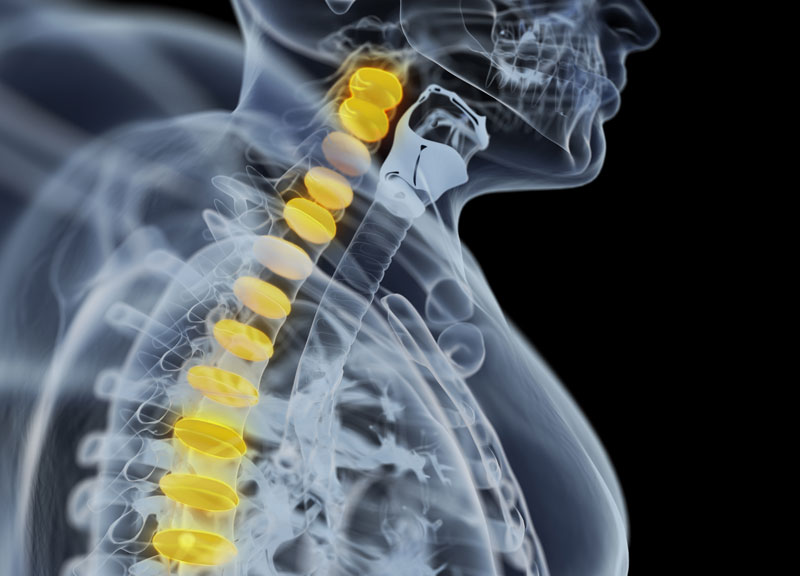What is a Cerebral Hemorrhage?
Also referred to as an intracranial hemorrhage and hemorrhagic stroke, a cerebral hemorrhage is a type of bleeding that occurs within the skull (cranium). Hemorrhages occurring within the brain or skull usually happen suddenly due to external or internal causes. A hemorrhage is dangerous because it can rapidly cause brain damage and can become life-threatening.
The brain is not capable of storing oxygen. Hence, it depends on blood vessels from the body to supply vital nutrients and oxygen. A cerebral hemorrhage or intracranial hemorrhage results in a pooling of blood exerting excess pressure on the brain, depriving it of oxygen.
Interruption of blood flow caused by a hemorrhage or stroke in the brain, depriving it of oxygen for over 3-4 minutes leads to permanent damage of brain cells (cell death). Additionally, the affected nerve cells and associated functions controlled are damaged.
Intracranial Hemorrhage – Who Gets It?
A stroke is known to be the leading cause of disability in the United States. It is also the fourth-leading cause of death. Unfortunately, cerebral hemorrhage accounts for nearly 10 percent of all strokes in the United States.
There is no age limit for intracranial hemorrhage. Depending on the cause, it can affect people of any age. Most commonly, cerebral hemorrhage and hemorrhagic stroke are associated with older adults. These may even occur in children also known as pediatric stroke.
Causes of Intracranial Hemorrhage
Intracranial hemorrhage may develop due to a number of reasons, including the following:
- Head trauma caused by a fall, sport related accident, car accident, etc.
- Treatment with anticoagulant therapy (blood thinners)
- Blockage of an artery in the brain due to a blood clot in the brain or a clot that travelled to the brain from another part of the body
- Ruptured cerebral aneurysm (a weak spot in a blood vessel wall that eventually balloons out and bursts)
- Build up of amyloid protein within the artery walls of the brain (cerebral amyloid angiopathy)
- Damage to blood vessel walls due to hypertension (high blood pressure) resulting in leakage in a blood vessel or breaking of blood vessels
- Leaking of malformed arteries or veins (arteriovenous malformation)
- Smoking
- Bleeding tumors
- Excessive alcohol use
- Use of illegal drugs such as cocaine
- Conditions associated with pregnancy, childbirth, such as postpartum vasculopathy, eclampsia, or neonatal intraventricular hemorrhage
Signs and Symptoms
The following signs and symptoms should be immediately reported to your doctor to facilitate immediate diagnosis of the condition:
- Sudden tingling, weakness, numbness
- Sudden paralysis of the face, arm or leg, especially on one side of the body
- Sudden, severe headache
- Difficulty with swallowing
- Problems with vision
- Loss of balance or coordination
- Difficulty understanding
- Speech problems (slurring nonsensical speech)
- Problems with reading or writing
- A Visible change in level of alertness, consciousness
- Lethargy
- Excessive sleepiness
- Coma
The Effects of Cerebral Hemorrhage
The condition is known to deprive the brain of vital oxygen and eventually killing brain cells. Bleeding inside the brain keeps nerve cells from communicating with other parts of the body and all functions they control. This process can lead to memory loss, speech problems, etc. The patient may also experience problems with movement in the affected area.
There are some lasting effects of the condition that the patient experiences. This entirely depends on the extent of damage and exact location of the hemorrhage. Some of the common lasting effects include:
- Numbness
- Not able to move part of the body (paralysis)
- Weakness in part of the body
- Difficulty swallowing
- Loss of vision
- Problems with communicating or comprehension
- Confusion
- Loss of memory
- Poor judgement
- Change in personality
- Emotional problems
Diagnosis Process for Intracranial Hemorrhage
The process usually includes:
- Detailed evaluation of physical symptoms
- An MRI to reveal cause of the bleeding
- A CT scan of the brain. This determines whether or not bleeding is present
Some other tests may also be conducted as per the requirement:
- Electrocardiogram
- Cerebro-spinal fluid exam
- X-ray of chest
- Blood studies
- Urinalysis
- Complete vascular study
- Complete blood count (CBC)
In certain cases, the doctors may recommend conventional angiography. This test is aimed at identifying an aneurysm or irregularly formed veins or arteries (arteriovenous malformation).
Treatment Options for Intracranial Hemorrhage
Bleeding inside the brain or skull calls for immediate medical attention. Report to a hospital emergency room as soon as possible. The physicians at the hospital will help determine the cause of the bleeding. The physicians will take the necessary steps to determine the best treatment option.
If a stroke has occurred as a result of a blood clot or bleeding, a treatment should be done immediately and accordingly. This will reduce damage to the brain and increases the chance of recovery significantly.
Surgery
Hemorrhage caused as a result of a torn artery requires instant brain decompression to release pooled blood and repair damaged blood vessels. The process of decompression is undertaken through a burr hole. It also involves a craniotomy incision (opening of the skull cavity).
A Hemorrhage resulting from a ruptured cerebral aneurysm will need aneurysm clipping through a craniotomy surgical procedure.
Other Treatments Options:
- Anti-anxiety drugs
- Special medication to control blood pressure
- Anti-epileptic drugs to ensure seizure control
- Medications required for controlling symptoms, including painkillers for severe headaches
- Stool softeners to prevent constipation and straining during bowel movements
- Essential nutrients and fluids as required are given through a vein (intravenously)
- Sometimes fluids and nutrients are transferred through a feeding tube in the stomach (gastronomy tube). This is usually done when the patient faces difficulty in swallowing
Long-term Treatment Plans
All long term treatment plans aim to assist the patient to return to daily living activities as soon as possible. These plans are designed in a way to help prevent intracranial hemorrhages in the future.
The time period of rehabilitation and recovery may vary according to the condition of each individual. This is also dependent on the extent of the rehabilitation.
Long-term rehabilitation treatment plans may include the following:
- Physical therapy
- Occupational therapy
- Speech therapy
- Lifestyle changes to minimize other hemorrhage risks
- Alternative forms of communication
Patient Prognosis
A patient in a coma or severely paralyzed post cerebral or intracranial hemorrhage may require long-term nursing home care. Patients regaining consciousness after the initial episode, will recover after rehabilitative therapy, especially those that are in good health.





